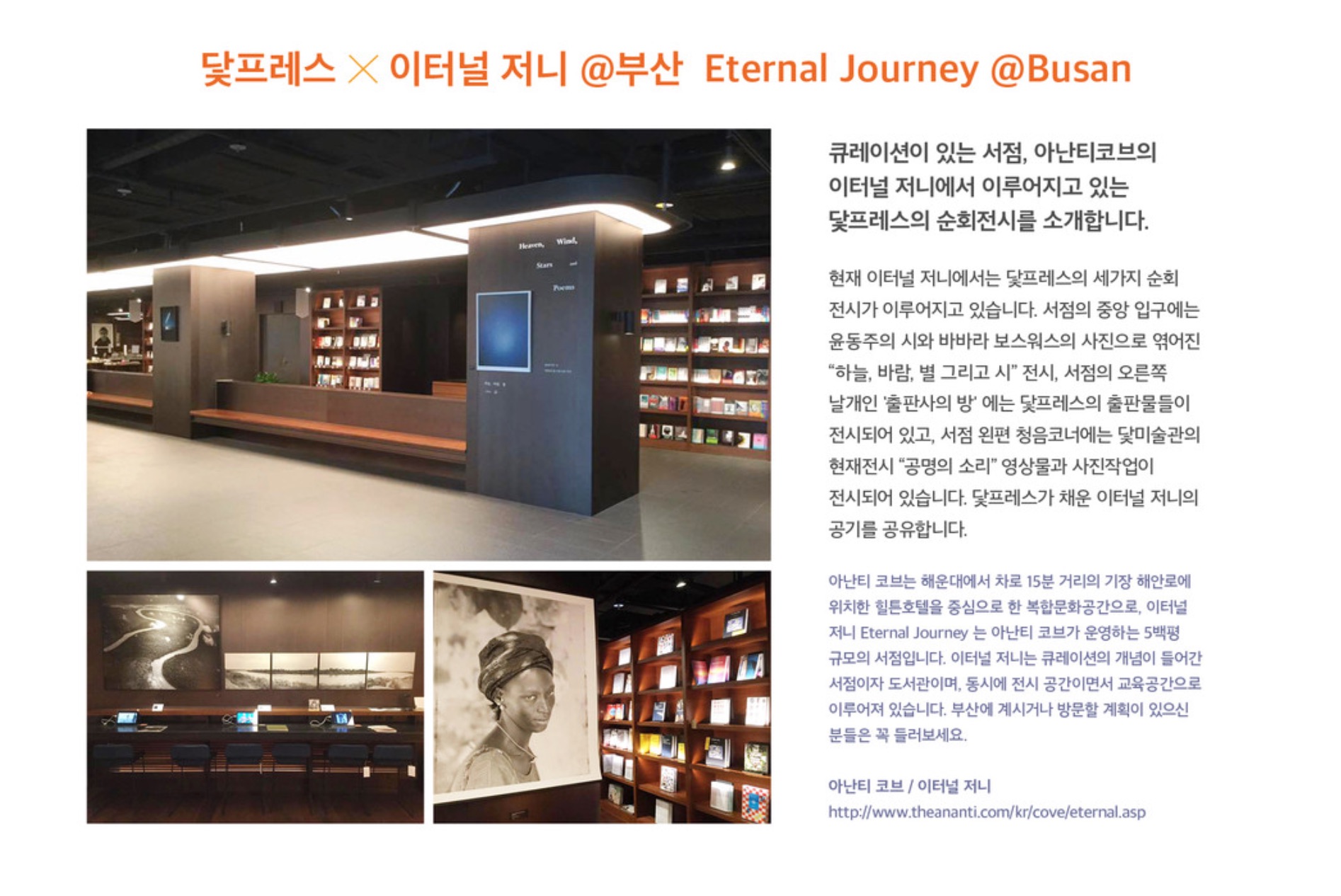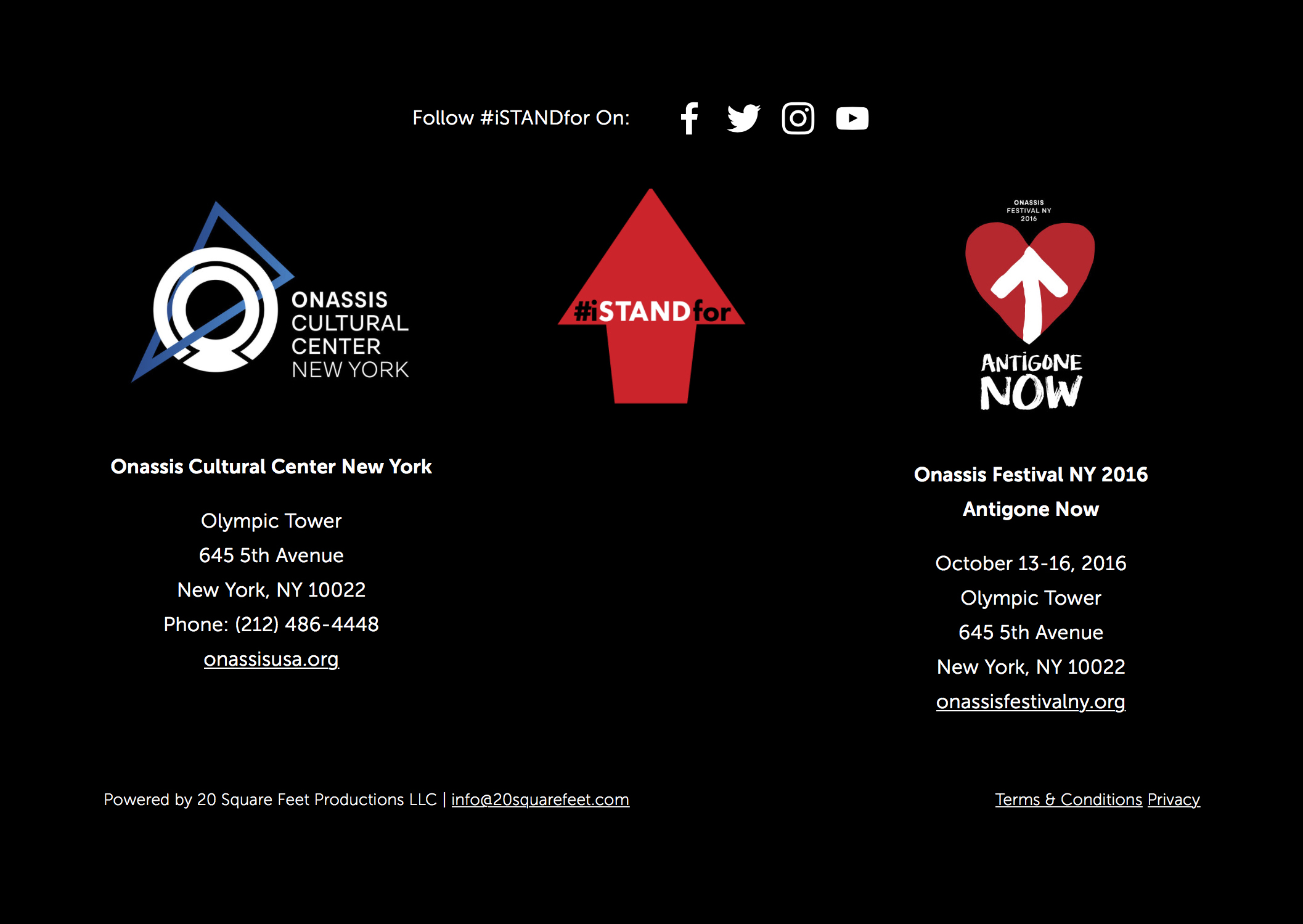News Posts (do not delete)
ARTICLE: Only the River Remains to Speak, Archi.Media Trust, Grosseto, Italy
Only the River Remains to Speak. Multimedia exhibition to promote and support the rights and cause of the Lower Omo Valley indigenous peoples
Project summary
“I have one question for you – what I am asking is – is this river, where we plant our food, where we catch our fish, will this continue or will we lose this farming land and water for the future? If you know, will you share with me? We have no say. Nobody comes and explains to us. We have no future.”
Houtil Naranya, Dassanech matriarch, Kara Women Speak
The cooperation between Jane Baldwin, Studio Azzurro Produzioni, Survival International (Italy) and Archi.Media Trust Onlus for the creation of this multimedia exhibition was developed from the common will to give voice to the peoples of the Omo Valley and Lake Turkana, in Ethiopia and Kenya, and to enlighten the environmental and human rights issues that threaten them. At the core of this advocacy initiative is photographer Jane Baldwin’s work Kara Women Speak, a project that represents over ten years of field-research, documenting the women of the Omo in their own voices and capturing the stories of issues that threaten their communities. With the cooperation of Studio Azzurro and the consultancy of Survival International (Italy), the images, the voices and the testimonies collected by Baldwin were edited and rendered in the multimedia, sensory rich and interactive exhibition Only the River Remains to Speak: a dense and compelling journey, combining the potential of new digital technologies with the materiality of raw matters, surfaces and objects, making them receptive and reactive to the gestures of the visitors. Aim of exhibition is telling a present-day story of a river and of the peoples that it sustains, narrated in their own voices, to raise awareness about the violations of tribal peoples’ human rights, calling for the protection of their ancestral knowledge and ways of life. Only the River Remains to Speak was exhibited from 1 October 2018 to 6 January 2019 at the Museum of Cultures – MUDEC of Milan.
ANNOUNCEMENT: MUDEC Current Exhibitions, Milan, Italy
INTERVIEW: VOGUE Italia
“Se a parlare non resta che il fiume” is a multisensory installation that combines the artwork of American photographer and educator Jane Baldwin with the creativity of the renowned Milanese art research group Studio Azzurro, founded in Milan in 1982. The installation is dedicated to the tribes of the Omo Valley, whose ecosystem and the people who depend on it have been threatened by a huge hydroelectric project made in Italy, and by the land grabbing that followed by agro-industrial farmers who want to grow cotton and sugarcane crops for export, and it is built as an interactive poetic journey along the Omo River where visitors engage with the women, who are the main characters of the project and the depositaries of oral traditions through tales, myth and song.
Immersed in the sounds of a flowing river, a metaphorical sculpture of red clay symbolizes the Omo River’s meandering course. The red, desiccated surface of the river indicates the crumbling and dried up riverbed, deprived of its annual flood by a controversial development project. The visitor transforms a clay fragment into an amulet that is dropped into a receptacle, tranforming the river into a storyteller, the voice of the river becomes the voices of the women.
The multisensory installation at MUDEC – Museo delle Culture, within the “Geografie del Futuro” program, will last until January 6, 2019.
We interviewed Jane Baldwin, American artist and educator who uses photography and audio recordings as a practice of documentation, research and storytelling.
When did you start to work systematically on the Omo River Valley area? What brought you there?
I first learned of Ethiopia’s Omo River Valley from a friend and colleague who had just returned from her travels in Africa in 2004. My first visit to the region was in 2005. Initially, I traveled as a photographer. I returned annually to the region between 2005-2014 to document women’s stories in their own voices. The project slowly evolved into a multi-sensory, immersive body of work about women, culture, human rights and the environmental issues that threaten the communities of Ethiopia’s Omo River Valley and Kenya’s Lake Turkana watershed. My advocacy for the human rights and environmental concerns of Ethiopia’s Omo River Valley and Kenya’s Lake Turkana developed later.
Why is your work focused in particular on women?
My relationships with the women of the region developed slowly over time. Their societies are patriarchal and gender roles are strictly defined, thus making women’s condition not always easy. Women are the nurturers and sustainers of their communities and families. They are valued for the number of children they bear and for their hard work, but they are seldom engaged for their thoughts and ideas. As a woman, I wanted to give them a voice. They were eager to sit and talk with me about their lives. About what made them happy and their concerns for the future of their communities.
For reasons I can’t explain, when I arrived in the Omo River Valley the land and people felt familiar. I intuitively understood that I had to leave my western sensibilities at home, my ideas of right or wrong or judgment—to learn, I had to listen, free from any stereotype.
My camp was located on Kara ancestral land. Kara women were often in camp walking back and forth between their village and the Omo River to collect water. I noticed that when the women came into camp they’d linger in the background. One day I approached them and we began to sit together, finding ways other than a common language to communicate. With the help of my guide and a young Hamar woman to translate for me, in 2009, I began to interview the women of the Kara, Hamar, Kwegu, Nyangatom, Dassanech and Turkana communities and record their cultural stories and their role within it. Women are the heartbeat of all Omo cultures. They are keepers of their oral traditions that pass down the narratives of their ancestry and families.
This project then evolved into giving ‘voice to the voiceless’— going beyond their portraits. Their stories become a mirror to examine our own ways of looking and ways of seeing, to question our own perceptions and life experiences.
In this project the sound has a fundamental role. How did you realized that this was so important and how did it develop in your project?
I have long been sensitive to the ways that photographers often put their lens on foreign cultures and the “colonial gaze” of western or Eurocentric perceptions that romanticize or judge tribal culture without engaging directly with the people. I’ve written letters to the editor when a foreign photographer or journalist drops into the Omo River cultures for a quick glimpse of the people and then projecting their biases reinforcing stereotypes that are most often misleading or even dangerous. They focus on shock value rather than a fair and respectful eye on their culture. I knew I wanted to do things differently. I first used a recorded audio of a woman’s story in a short film entitled “Kara Women Speak” in 2012, but it was only with the collaboration of Studio Azzurro that all the multimedia elements of my work were brought together and combined into a multi senses and immersive project of great impact as “If only the River remains to speak”. Environmental sounds are an important element for setting the ambience of a space, and the sound of the women’s voices help to communicate the emotion, disposition and intention of the subject.
Tell us something about the collaboration with Studio Azzurro. How did it start?
My colleague encountered Studio Azzurro’s work at the Venice Biennale and she was impressed by their ability to combine technology, design and creativity to create emotionally relevant installations and sensitive environments that react to external incentives. Where storytelling originates by the visitors own gestures. I believe art can inform and focus our attention in powerful and insightful ways. Through engagement and conversation, art can inspire empathy and evoke our humanity by raising awareness of political issues, and be a catalyst for change.
Studio Azzurro was definitely the partner I was looking for! After a call and with the help of Survival International – the global movement for tribal peoples – I flew to Milan for a planning meeting in March 2016.
Studio Azzurro led the installation design and managed the construction and technology. Leonardo Sangiorgi envisioned the installation space immediately, which included a 40 foot long riverbed of dry red clay as a metaphor for the dying of the Omo River. Back in California, I finalized the image selection and worked editing the ambient sounds. A thrilling collaboration.
Do we need to use other languages besides the image to speak to people and get closer to them? Is there a kind of limit in photography?
I don’t believe there is a limit to photography—it’s always in transition. However, I believe photographic exhibitions can often be one dimensional. I felt that in order to tap into the consciousness of the viewer it needed to be multisensory and immersive. For this reason, we chose to collaborate with Studio Azzurro whose work creates deep emotional engagement. Visitors often come to the conclusion that the women – as any other tribal people in the world – are just like us, in more ways than they may have originally thought. The added stories have helped increase a sense of shared humanity.
“Se a parlare non resta che il fiume” is a multisensory installation where the viewer is actively engaged in it. How important is it today, in your opinion, the experience in the process of involving people and receiving a message?
The multi-sensory experience is an essential and important part of this project. By using technology and appealing to multiple senses – including tactile activities – our goal is to simulate encounters, bring the stories of the women of the Omo River Valley to life and make visitors have a more profound experience and engage and connect on a deeper level. The entire experience provides a 45-60 minute virtual “visit” able to build a bond with the women of the region and able to help the viewers to break through the emotional exhaustion often experienced when faced with difficult situations, such as environmental or human rights’ violations.
My hope is that this exhibition helps us pause to consider the consequences of our irresponsible use of natural resources around the globe. “Progress can kill” quotes a campaign by Survival International, whose important work I hope will be underlined by the installation, giving it the support it deserves. The combined effect of land grabbing and a huge dam made in Italy is compromising the environmental balance of the Omo basin and undermining the food security of at least 100,000 indigenous people in Ethiopia and 300,000 in Kenya largely self-sufficient. The granaries and the precious pastures of many Kara, Mursi and Hamar villages have been destroyed. The Kwegu, who depend almost exclusively on hunting and fishing, are starving. Many of the communities I have visited have already lost or are losing access to their lands and to the banks of the river. And every opposition is silenced by the Ethiopian government with force and violence. The Ethiopian authorities say they want to “commit to preserving the cultural heritage of these groups (threatened with extinction) through the creation of a museum of the Omo cultures and through ‘cultural villages’ “oriented to tourism”. But “depletion, death and human zoo are too high a price to pay to this alleged ‘progress’ and they are unacceptable”, Francesca Casella, director of the Italian headquarters of Survival (www.survival.it), denounced. “New models of ‘development’ are needed, that do not trample on human rights. Not just for the indigenous peoples, but for all of humanity”. The indigenous peoples of the Omo valley are not primitive and underdeveloped as many want us to believe, they are just different and represent an essential part of the human diversity on which the survival of all of us depends. Both Studio Azzurro and I hope that the installation will instill this awareness in all visitors inspiring them to take part in the change.
SE A PARLARE NON RESTA CHE IL FIUME
Ambiente sensibile per le tribù della Valle dell’Omo
Artistic installation by Studio Azzurro and photographer
Jane Baldwin, in support of Survival International
MUDEC – Museo delle Culture di Milano
1 October 2018 – 6 January 2019
Interview by Rica Cerbarano
ANNOUNCEMENT: Milan Photo VOGUE
PUBLICATIONS: Survival International's 50th Anniversary Special Edition Calendar
I’m honored to have one of my photographs included in Survival International’s Special Edition 50th Anniversary 2019 calendar. The calendar benefits the great work they do protecting the global rights of tribal peoples’ around the world. The calendar includes the following other photographers:
Steve McCurry
Livia Monami
Yann Arthus-Bertrand
James Morgan
Timothy Allen
Wayne Quilliam
George Rodger
Claudia Andujar
Jane Baldwin
Carol Beckwith & Angela Fisher
Brent Stirton
Gleison Miranda/FUNAI
Bryan & Cherry Alexander
Sebastião Salgado
Please join me in purchasing the calendar for €14.00 at catalogue.survival.it.
ANNOUNCEMENT: NOTES & PHOTOS FROM MILAN: "If Only the River Remains to Speak," Milan, Italy
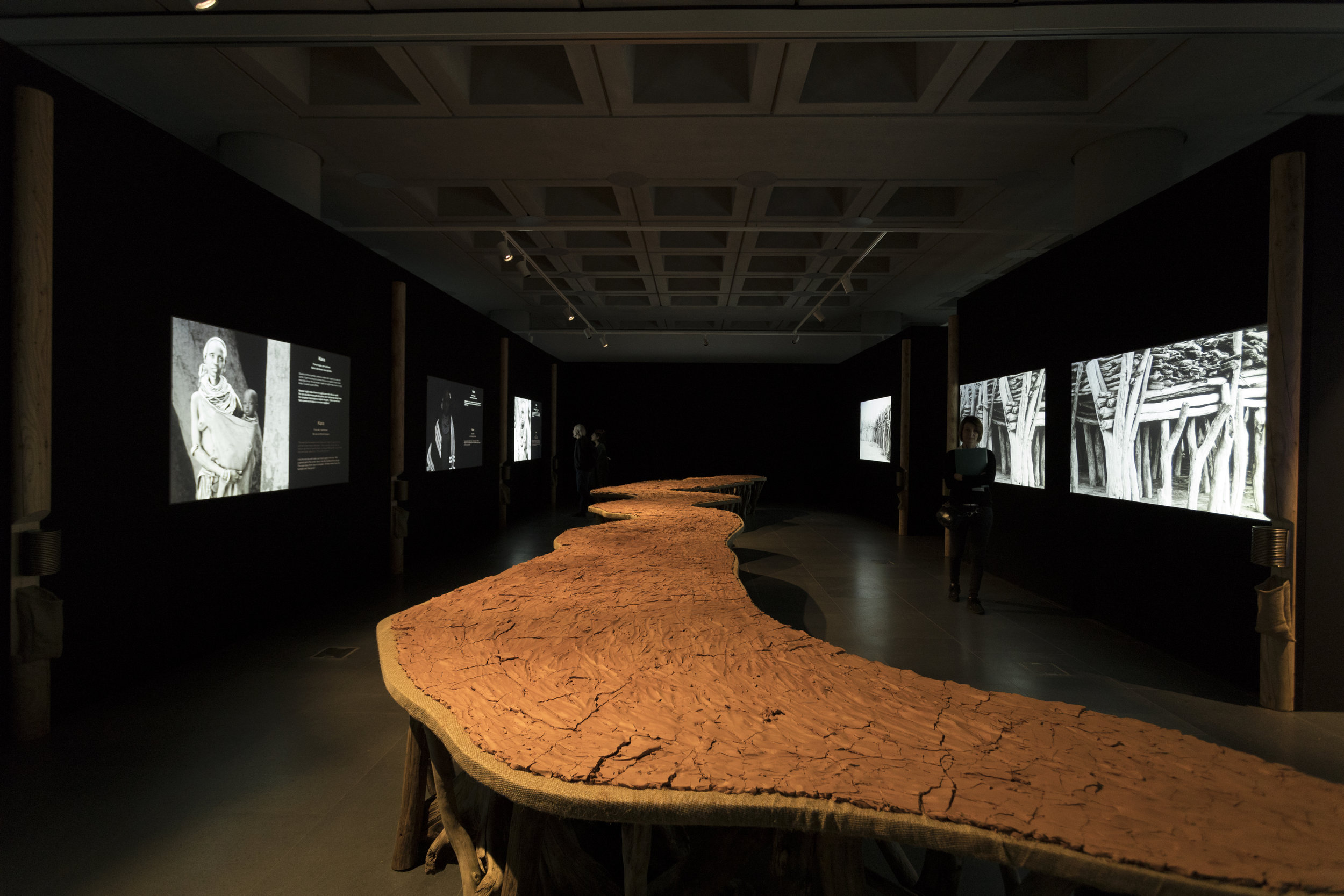
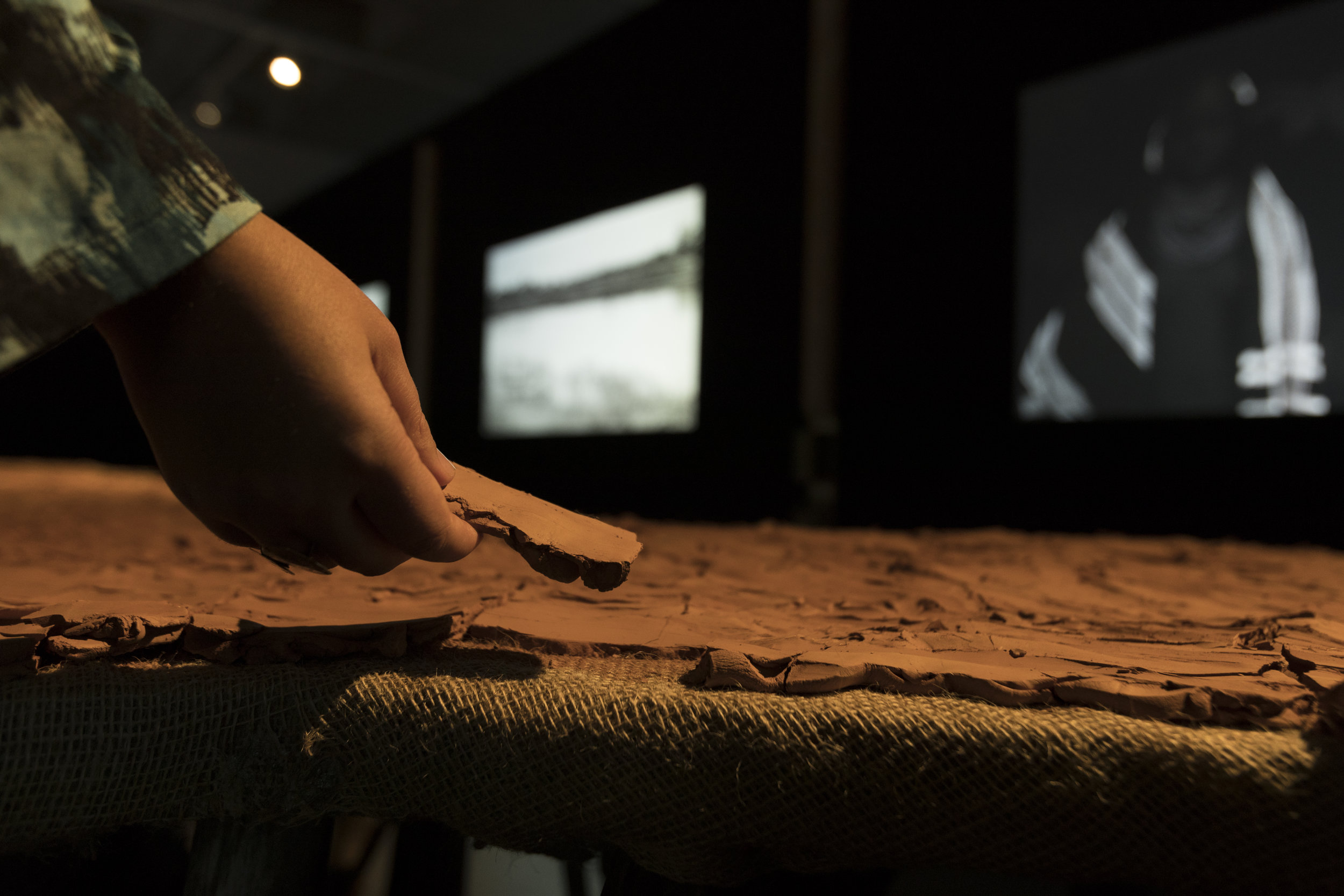

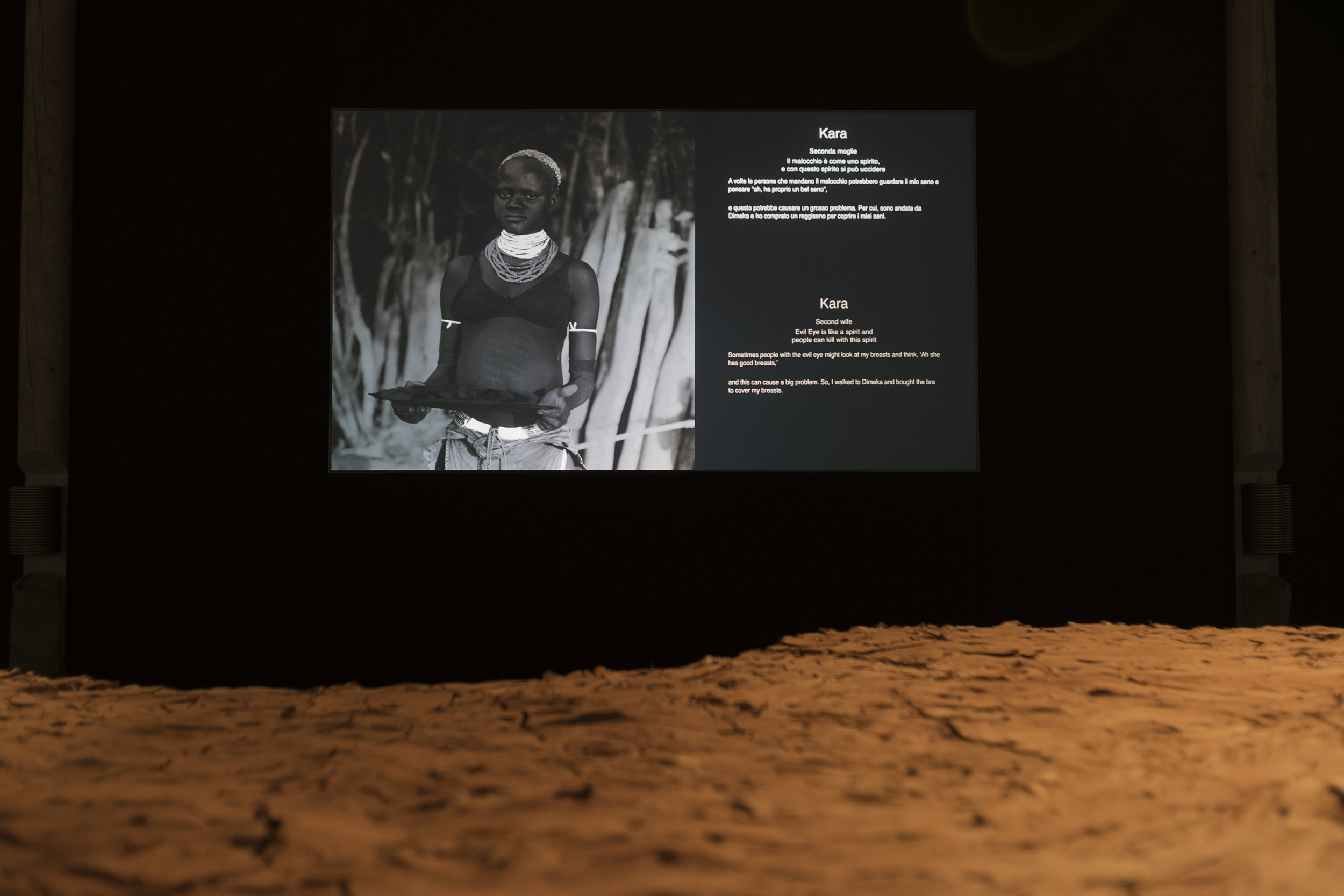
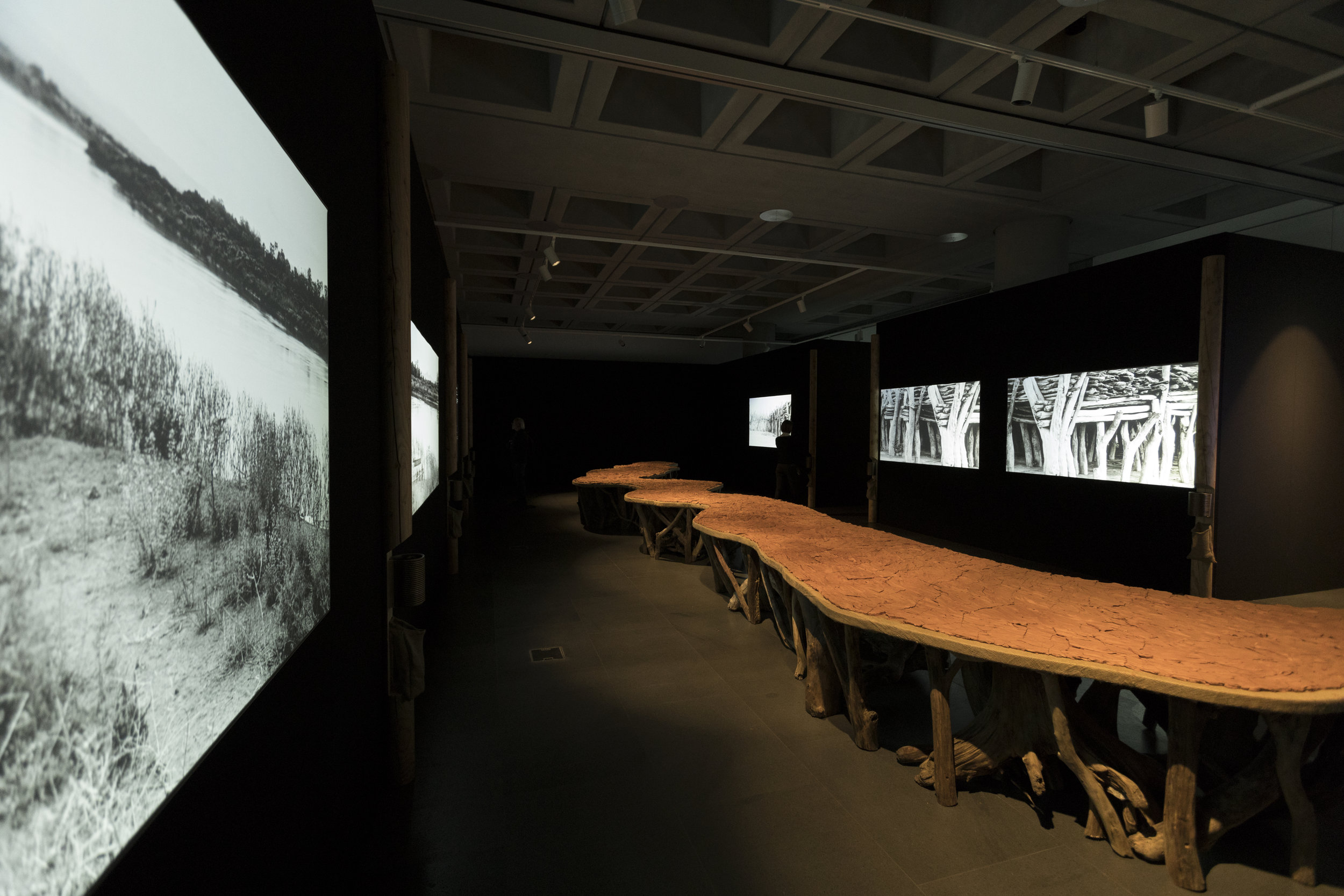
English Captions: (Above) "If Only the River Remains to Speak”, sensitive environment, MUDEC 2018. Photo: Studio Azzurro. (Below) "If Only the River Remains to Speak”, sensitive environment, MUDEC 2018. Photo: Survival International.
“If Only the River Remains to Speak” at Museo delle Culture (MUDEC), Milan, Italy until January 6, 2019
Twenty of my black and white portraits of the women from Ethiopia’s Omo River watershed and Kenya’s Lake Turkana along with related stories and audio recordings are presented in “If Only the River Remains to Speak” — a collaboration with Studio Azzurro and Survival International that is now open at the Museo delle Culture (MUDEC), Milan, Italy until December 31, 2018.
Studio Azzurro’s visionary installation design has come to life. The space is anchored by a 30-foot, sinuous red clay riverbed that seems to continue forever into the darkened room. Visitors are finding it easy to approach the table-height river bed to touch its dry clay, and then select a piece of cracking red clay to use as tokens (and a keepsake) to activate the audiovisual wall displays of the women and their stories.
The twenty personal stories of the women from the Omo watershed region reveal themselves on screens around the dark room, breaking through “indigenous objectification” (photographs that memorializes cultures while overlooking the reality of its living members) by including audio of their voices and text of their own stories in both English and Italian.
As we had hoped, the entire experience provides a 45-60 minute virtual “visit” with the women of this region and gives them a voice in Milan and Italy where the United Nations, hydrologists, corporations and lawyers are contemplating the best way forward for their ancestral land and resources.
The immersive art environment forms a human connection, cultivating empathy for the struggles these women and their communities face as their flood-recession agriculture and ability to plant their seasonal sorghum along the Omo River has been compromised. The Omo River’s natural resources are being destroyed as a result of dam development and the massive Kuraz irrigation project for sugarcane. Listening to the emotion in the women’s voices and reading their stories makes it is clear that they have the same concerns and aspirations as women in developed countries.
Protecting the rights of tribal people is the work of our project collaborator Survival International, who has been bringing educational programs to the museum as well as stakeholders in the issues around the Omo to encourage conversations for cultural change. Survival International has already sponsored group tours with hundreds of high school and university students. Students experience “the Omo” through engagement with the exhibit followed by conversation, reflecting, for example, on the evolution of the word “primitive” and how it has acquired negative meanings in a post-colonial world. This exercise helps to reveal our common humanity and dispel misconceptions that these communities are primitive, and reveals a highly sophisticated interdependent civilization based on an oral tradition, at risk of extinction. University students are also challenged to consider the real-life challenges and damages caused by mega-dam construction, and then suggest alternative energy solutions.
I believe that this installation is connecting cultures across miles of geography, and reminding us that we are all human.
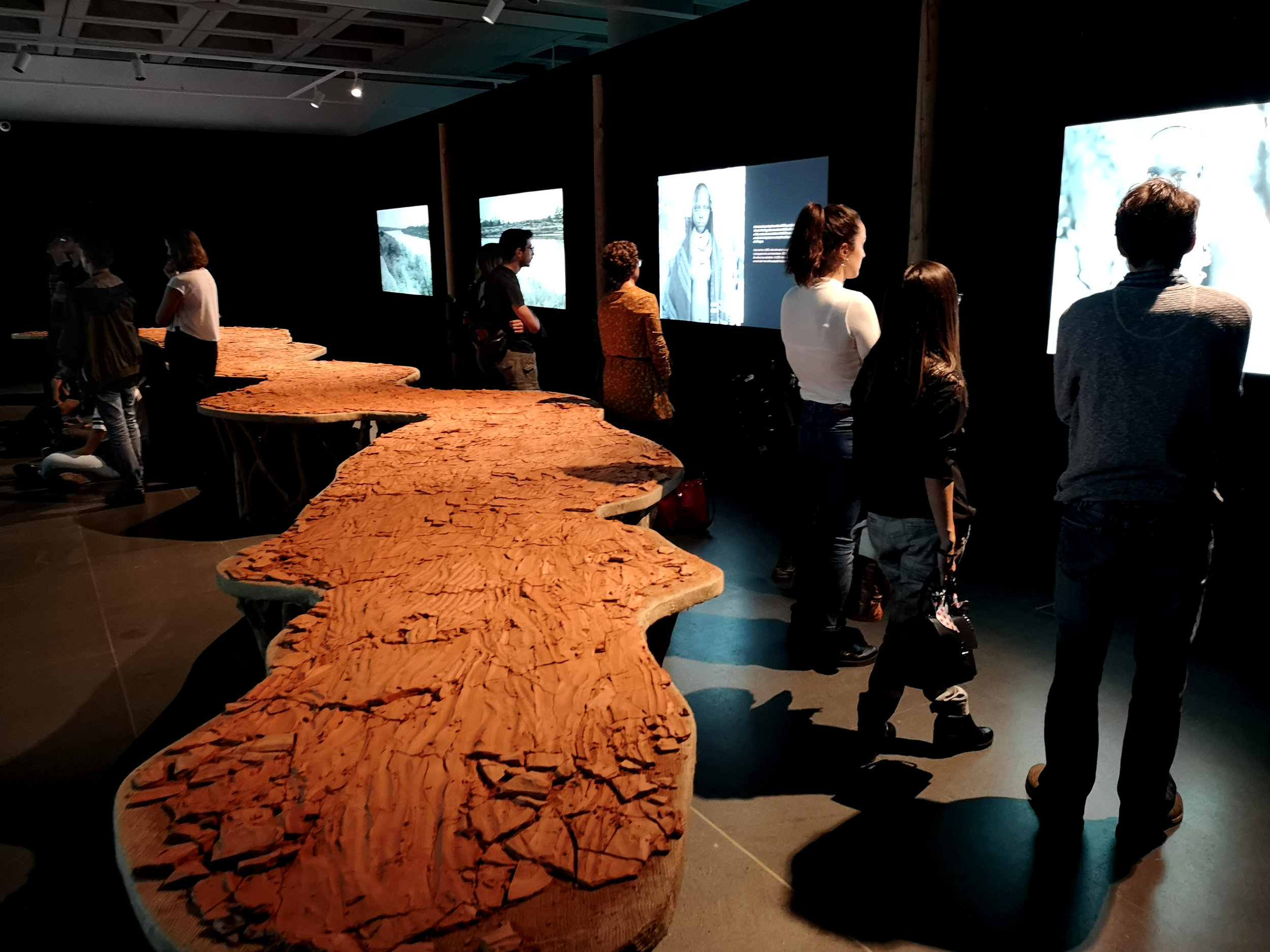
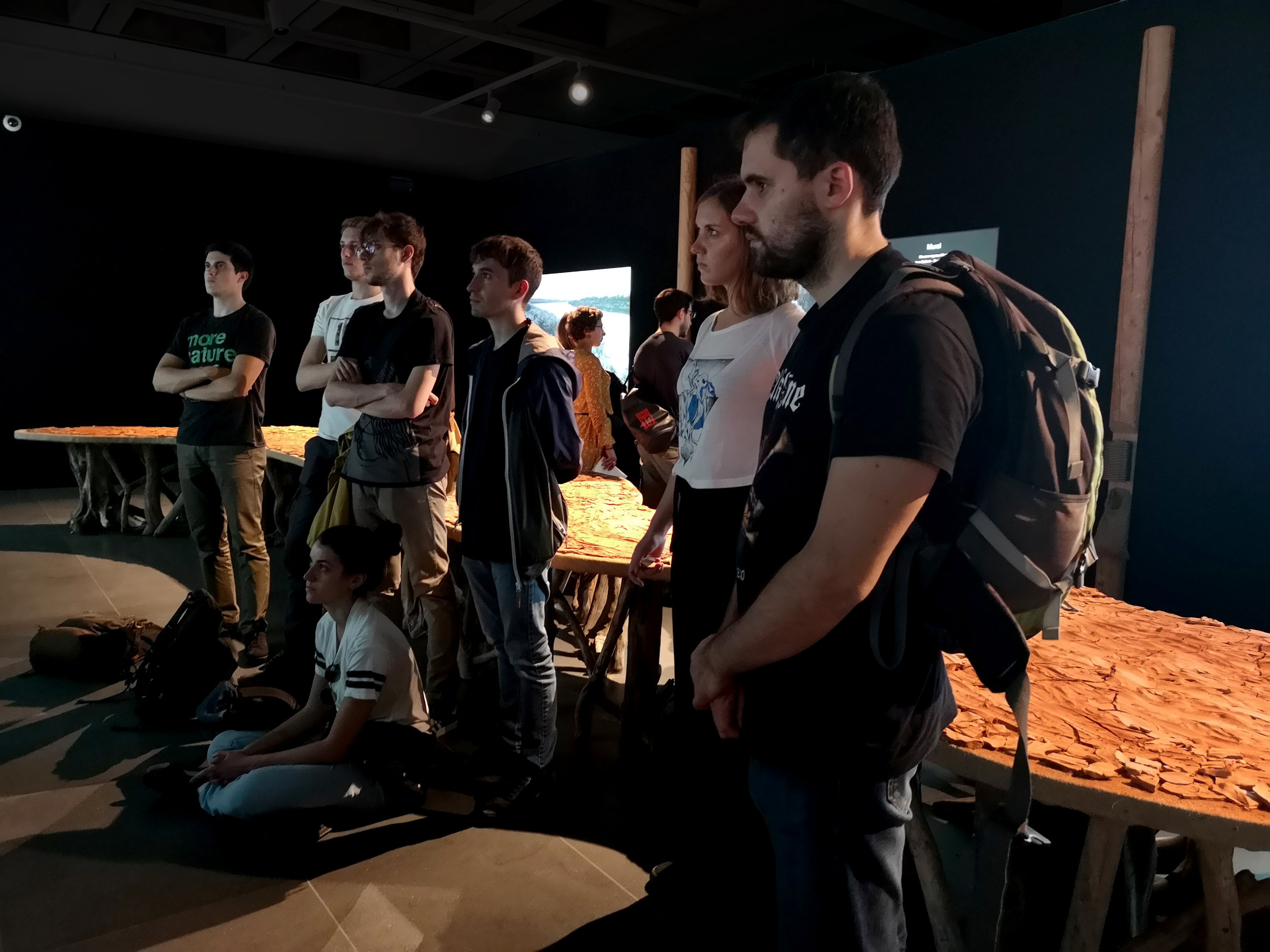

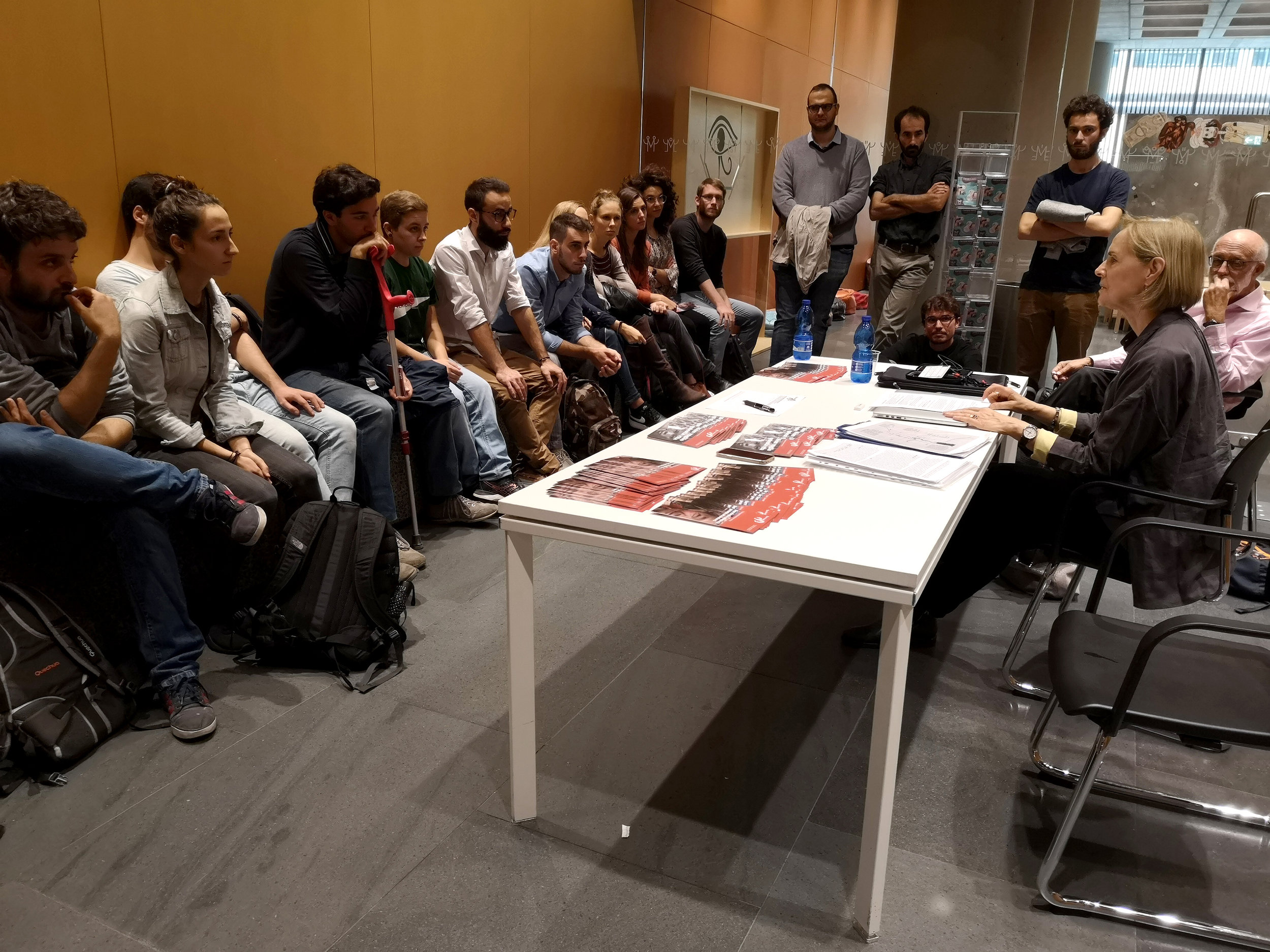
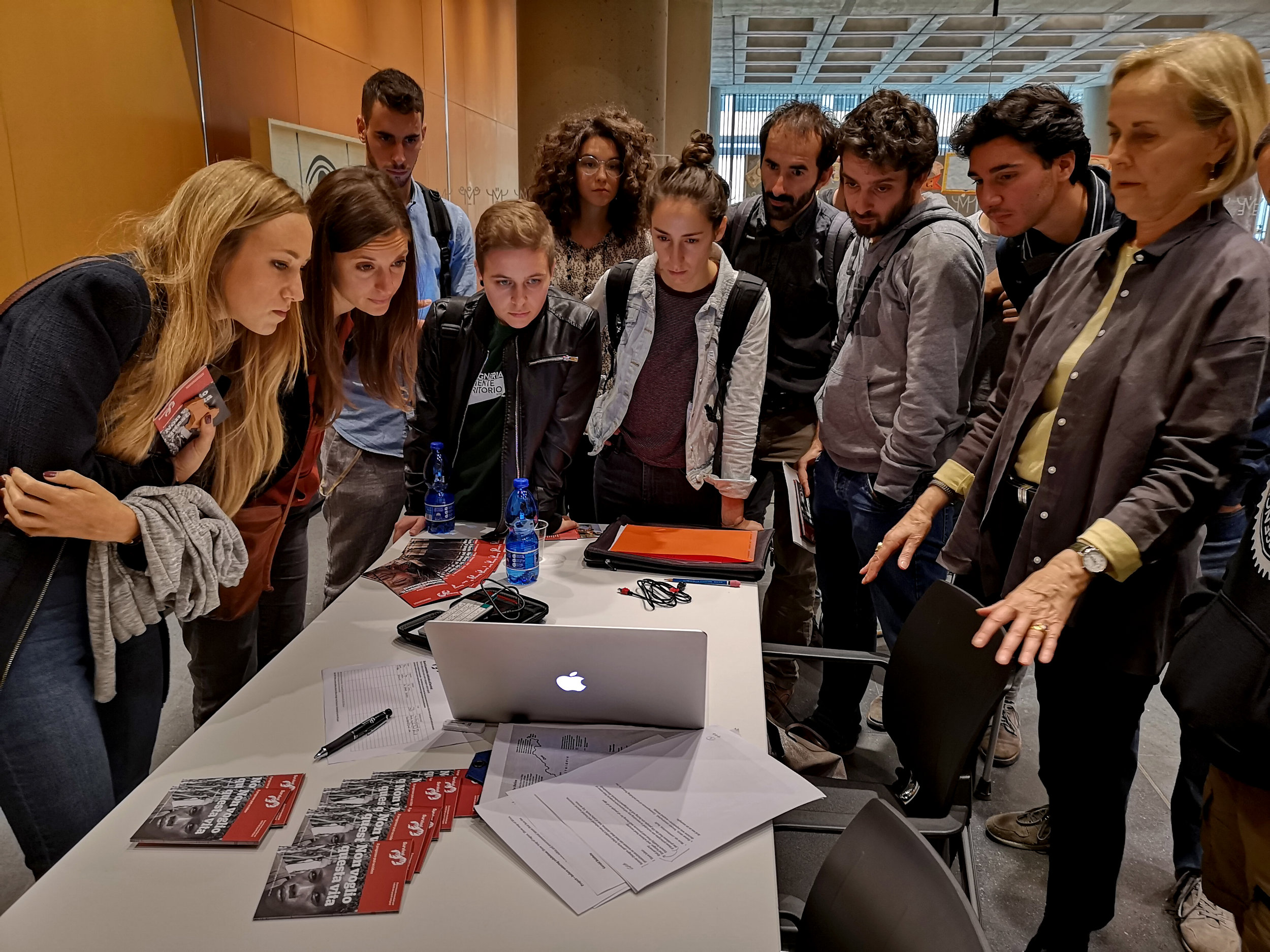
ANNOUNCEMENT: Museo delle Culture, Milan, Italy
Exhibition Dates — October 1 - December 31, 2018
VIDEO: Teaser Video Studio Azzurro, Milan, Italy
ANNOUNCEMENT: UPCOMING INSTALLATION Studio Azzurro, Milan, Italy
Press Release Link
Museo delle Culture (MUDEC), Milan, Italy, Future Geographies—presents “Only the River Remains to Speak”—an art installation by studio Azzurro with Photographer Jane Baldwin, in collaboration with Survival International. The exhibition (Oct. 1 - Dec. 31) gives voice to contemporary explorers, and is dedicated to the social, artistic and cultural exploration that has characterized the more recent post-colonial history.
If Only the River Remains to Speak
A unique, interactive art installation that honors the voices and faces of the indigenous peoples of Ethiopia's Omo River Valley and Kenya's Lake Turkana watershed—invites us on a poetic multimedia journey in the regions that gave birth to humankind. From the dry riverbed within the exhibition, the contours of a burning issue highlight the deep bonds between humans and their habitat, between us and other peoples, between safeguarding biological and cultural diversity and the future of humanity. The project combines the fieldwork of the photographer and educator Jane Baldwin with the work of Survival International in defending the rights of tribal peoples around the world and the renowned artistic creativity of Studio Azzurro.
PRESS RELEASE: FEATURED PHOTO Fisherman at Lake Turkana, Kenya, © Jane Baldwin
Date: Wednesday, June 27, 2018
FOR IMMEDIATE RELEASE
28 June 2018
Today, the UNESCO World Heritage Committee took the decision to officially inscribe Lake Turkana as a World Heritage site “in danger” because of severe impacts caused by the Gibe 3 Dam, constructed upstream on Ethiopia’s Omo River. The dam and associated sugar plantations have severely restricted flows into Kenya’s Lake Turkana, the world’s largest desert lake.
“We applaud the decision taken by the World Heritage Committee,” states Dr. Rudo Sanyanga, the Africa Director at the non-profit International Rivers, which advocates for the protection of rivers and the rights of people who depend on them. “Ethiopia has knowingly and deliberately jeopardized the viability of Lake Turkana, which serves as a critical lifeline for half a million people in Kenya. This decision is long overdue.”
Fishermen at Lake Turkana
© photograph by Jane Baldwin
Kenyan campaigners have led the opposition over the past decade to Ethiopia’s Gibe 3 Dam, which began producing power in 2016. Since then, lake levels have dropped precipitously as Ethiopia fills the dam’s reservoir and diverts the river’s flows toward newly established sugar plantations that require substantial water resources. This has led to significant hardship for the hundreds of thousands of people who subsist off of Lake Turkana, as they have seen fish catches plummet and are facing food insecurity. Further developments upstream could lead to the collapse of local livelihoods.
“The lives of local communities now hang in the balance given that their main sources of livelihood are facing extinction,” says Ikal Ang’elei, Director of Friends of Lake Turkana. “This decision by the UNESCO World Heritage Committee should serve as a notice to Ethiopia to cancel any further dams planned on the Omo River.”
Lake Turkana was previously proposed by UNESCO to be added as a site in danger in 2011, but Ethiopia has repeatedly avoided inscription by promising to conduct a Strategic Environmental Assessment of the Gibe scheme’s impacts. That study has still not begun, even while dam construction continued apace and sugar plantations expanded. Meanwhile, Ethiopia is aggressively pursuing further dam development on the river, having signed a contract with Italian construction firm Salini Impregilo to build an additional dam at the Gibe site, which would only compound the impacts on Lake Turkana.
“This decision represents a serious indictment of the government of Ethiopia, which has for years attempted to downplay the risks and used delaying tactics to prevent what amounts to an official reprimand for its conduct,” adds Ms. Ang’elei.
Lake Turkana joins a long and growing list of World Heritage sites threatened by dam construction. Tanzania’s plans to construct the Stiegler’s Gorge Dam in the Selous Game Reserve, a biodiversity hotspot for African wildlife, has prompted outcry from conservationists over threats to endangered species.
“While Lake Turkana is a glaring example of the impacts that dams have wrought on some of the world’s irreplaceable cultural and biodiversity sites, it has unfortunately become all too common,” says Dr. Eugene Simonov, Coordinator of the Rivers Without Boundaries Coalition. “Despite the precipitous decline in new hydropower globally, nearly a quarter of all natural heritage sites in the world are threatened by water infrastructure such as dams – and this share is rising.”
This concerning trend prompted the World Heritage Committee to pass a resolution in 2016 calling for a ban on dam construction within the boundaries of World Heritage sites, and for proposed dams that may impact World Heritage sites outside their boundaries to be “rigorously assessed.”
As the 42nd session of the UNESCO World Heritage Committee proceeds, civil society requests that the delegates pass a resolution calling for the protection of all World Heritage sites threatened by dams and other infrastructure so that current and future generations can benefit from the valuable natural inheritance upon which we all depend.
Media contacts:
Dr. Rudo Sanyanga, International Rivers
rudo@internationalrivers.org, +27 12 4302029
Ikal Ang’elei, Friends of Lake Turkana
ikal@friendsoflaketurkana.org, +254 712 142901
Dr. Eugene Simonov, Rivers Without Boundaries Coalition
esimonovster@gmail.com
PUBLIC PROGRAM: Marin High Arts School, Marin, CA
Art Beyond High School
Written by Youth in Arts on February 27th, 2018
On February 20th, as a special program during the “Rising Stars: 27th Annual Marin High School Art Show,” Youth in Arts hosted a panel discussion on “How to Pursue Art as a Passion and Profession.” We are so grateful to our panelists for sharing their experience and professional and life lessons with students and have received their permission to share some of their presentation materials here with those of you not able to attend.
Jane Baldwin spoke of her activism through photography, documenting the lives of the people of the Omo River Valley in Ethiopia.
This is a project that has evolved for Jane over a decade and she emphasized to young artists interested in documentary work and activism that you don’t need to know what your project will be when you set out to find it. She first visited the Omo River Valley to just take photographs, and returned many times in ten years to not only take her photographs, but to also record the stories of the women from the region. This has turned into work on women’s rights, clean water, and international education programs. She has exhibited her photographs and the stories she recorded in Sonoma, CA., Korea, and hopefully in Milan, Italy next year. Jane says to be open to new experiences and let them take you down new and unexpected paths.
© Photograph by Jane Baldwin
PUBLICATION: Only the River Remains | Kara Women Speak
2017
21 x 26.5cm
Soft cover / Perfect binding
114 pages
Limited Edition, 100 copies, signed and numbered
₩90,000 / $90.00
ISBN 978-89-976052-6-2-03660
For one decade Jane Baldwin has visited Ethiopia, Africa, documenting the lives of Kara women living on the Omo River through photography, voice recordings and video. Baldwin is especially focused on bringing their voices to the world after witnessing the imperiled ecosystem and endangered livelihood of these women due to the construction of dams and other development policies.
"Working behind a medium format Hasselblad, the relationship between the artist and subject is unbroken, forming a cross-cultural bridge of human understanding. The direct gaze of each woman exhibits a transparency of spirit, both vulnerable and of tremendous strength."
- Anne Veh, Curator
Project Director Sangyon Joo
Curator Kwan Hoon Lee
Coordinator Soo Yeon Kim
Translation Zoey Hayeon Lee, Cathy Kyu Yeon Kim
Book Design Min Young Kim
Korean Proofreading Juyoung Jung
Printing and Binding Datz Books
Book ©2017 Datz Press
Photographs ©2004-2014 Jane Baldwin
Text © Jane Baldwin, Anne Veh, Lori Pottinger
All rights reserved. No part of this book may be reproduced in any form without written permission from the publisher and the artist.
The entire bookmaking process of this book is carried out with exquisite craftsmanship by Datz Books.
ANNOUNCEMENT: Busan, South Korea
PUBLICATION: Magazine Gitz vol.9 | Resonant Voices
2017
23 x 30 cm
Soft cover / Perfect binding
104 pages
$25.00
ISSN 2093-7970
Publisher's Letter
Introduction by Anne Veh
Artist Lonnie Graham
Artist Jane Baldwin
Publisher’s Letter
Resonance means something rings true in one another,
influences one another.
The waves spread far.
It means empathizing with something and following it,
and when the vibration amplifies and deepens
different things meet to become stronger.
We are looking for a witness to life,
someone who will listen to our stories,
wipe away tears,
hold our hand.
We are looking to become one again.
As temporary visitors,
where do we come from
and
where are we going?
With the language of light,
which is like a spell,
returning to that road,
we face and embrace the land
with the deep eyes of the sky.
To all those who are searching for a path,
it is the light arriving,
the warm air rising,
the fair and upright, unbiased
conversation resounding between us all.
In the playground of light
a quiet sound of the world can be heard.
You are here in the place I emptied myself.
As a single circle,
as a river flowing with life
we ask the way back.
Sangyon Joo, Director of the Datz Museum of Art
*This volume is published in conjunction with the exhibition “Resonant Voices”, which held from Sep. 9, 2017 to Feb. 25, 2018 at the Datz Museum of Art, Korea.
EXHIBITION: Datz Museum of Art, Seoul, South Korea
September 9, 2017 - February 25, 2018
참여작가
로니 그래험 Lonnie Graham
제인 볼드윈 Jane Baldwin
협력 큐레이터
앤 베이 Anne Veh
닻미술관은 가을을 맞이해 특별 기획전시 <공명의 소리 Resonant Voices>를 준비했습니다. 미국에서 초청한 두 명의 사진가, 로니 그래험 Lonnie Graham과 제인 볼드윈 Jane Baldwin은 각각 '세계와의 대화 A Conversation with the World'(1987-현재), '남겨진 강: 카라 여인의 이야기 Only the River Remains: Kara Women Speak'(2004-현재) 다큐멘터리 프로젝트를 선보이며 타인에 대한 진정 어린 이해와 관용, 사랑의 가치에 대해 깊이 있는 대화를 건넵니다.
로니 그래험은 30년간 '세계와의 대화'를 진행하며 6개 대륙, 50여 개국에서 만난 사람들에게 여덟 가지 주제 -기원origins, 가족family, 삶life, 죽음death, 가치관values, 전통tradition, 연결connections, 서구 문화western culture에 대해 공통 질문을 던지고 그들의 사진을 찍어왔습니다. 제인 볼드윈은 아프리카 에티오피아를 10년 동안 방문하며 오모강(Omo River)에서 살아가는 카라 여인의 삶을 사진과 영상 등으로 기록했습니다. 특히 그는 댐 건설과 개발 정책으로 생태계는 물론 카라인의 생존까지 위협받는 모습을 보고 이들의 목소리를 전하기 위해 애쓰고 있습니다.
<공명의 소리 Resonant Voices>는 이처럼 두 작가의 의미 깊은 프로젝트의 화합으로 이루어졌습니다. 전시 공간에 들어서면 로니 그래험이 촬영한 27명의 인물 사진이 관람객을 둘러싸고 카라 여인과 오모강의 풍경이 이들과 함께 호흡하며 마주합니다. 더불어 닻프레스에서 발간된 매거진 ‘깃’ 9호와 두 작가의 사진 출판물이 전시를 더욱 풍성하게 만듭니다.
로니 그래험과 제인 볼드윈의 두 프로젝트는 결국 같은 이야기를 향합니다. 바로 각자 삶의 문화를 지켜내기 위해 고군분투하는 모습은 우리의 삶과 결코 다르지 않다는 사실입니다. 이는 타인의 목소리에 진심으로 귀 기울여야 하는 이유이기도 합니다. 공감의 울림으로 가득한 닻미술관의 새로운 전시, <공명의 소리 Resonant Voices>로 여러분을 초대합니다.
For the autumn season Datz Museum of Art has prepared a special exhibition titled, “Resonant Voices.” Two photographers from the United States—Lonnie Graham and Jane Baldwin—have been invited to present their documentary projects: “A Conversation with the World” (1987-present) and “Only the River Remains: Kara Women Speak” (2004-present), each engaging in profound conversations about the genuine understanding and generosity of others and the value of love.
Over the past 30 years, Lonnie Graham has carried out his “Conversation with the World” in more than 50 different countries on six continents. He asks the people he meets common questions concerning eight subjects—origins, family, life, death, values, tradition, connections and western culture—and photographs them. For one decade Jane Baldwin has visited Ethiopia, Africa, documenting the lives of Kara women living on the Omo River through photography, voice recordings and video. Baldwin is especially focused on bringing their voices to the world after witnessing the imperiled ecosystem and endangered livelihood of these women due to the construction of dams and other development policies.
Resonant Voices was made as a collaboration between the two artists’ meaningful projects. As viewers enter the exhibition space, they are surrounded by 27 portrait photographs taken by Lonnie Graham, and then come face-to-face with the Kara women and landscapes of the Omo River. In addition, the 9th issue of the magazine Gitz, published by Datz Press, and the two artists’ photographic publications add scope to the exhibition.
The two projects by Lonnie Graham and Jane Baldwin are ultimately directed toward the same story. The lives of these people struggling are no different from our own lives. We are all struggling, essentially, to preserve our world and culture. For this reason we must listen to their voices sincerely. We invite you to the new exhibition “Resonant Voices” at Datz Museum of Art, which we hope resonates long after you leave the museum.
제인 볼드윈 Jane Baldwin '남겨진 강: 카라 여인의 이야기 Only the River Remains: Kara Women Speak'
공명이란, 마주 울리는 것
영향을 주고받는 것,
그 파장이 널리 퍼지는 것입니다.
어떤 것에 공감하여 따르는 것이며,
그 진동의 폭이 깊어지고
서로 다른 것이 만나 강해지는 것입니다.
삶의 증인을,
이야기를 들어줄 한 사람을 찾습니다.
그 눈물을 닦아주고
두 손을 마주잡아
다시 하나가 되기 위해
잠시 머물다 떠나는,
우리는
어디서 와서
어디로 가고 있는지
주문 같은 빛의 언어로
다시 그 길로
돌아가기 위해
대지를 품은 얼굴
하늘의 깊은 눈을 가진,
길을 찾는 모든 이에게
공명이란, 이곳에 닿은 빛
위로 오르는 따뜻한 공기
치우침 없이 공정하고 바른,
서로를 향해 마주 울리는 대화입니다.
빛의 놀이터에
세계의 고요한 소리가 울립니다.
나를 비워낸 자리에 당신이 와 있습니다.
하나의 원이 되어
생명이 흐르는 강으로
다시 돌아가는 길을 묻고 있습니다.
주상연_기획
“Resonance” means something rings true in one another,
influences one another.
The waves spread far.
It means empathizing with something and following it,
and when the vibration amplifies and deepens
different things meet to become stronger.
We are looking for a witness to life,
someone who will listen to our stories,
wipe away tears,
hold our hand.
We are looking to become one again.
As temporary visitors,
where do we come from
and
where are we going?
With the language of light,
which is like a spell,
returning to that road,
we face and embrace the land
with the deep eyes of the sky.
To all those who are searching for a path,
it is the light arriving,
the warm air rising,
the fair and upright, unbiased
conversation resounding between us all.
In the playground of light
a quiet sound of the world can be heard.
You are here in the place I emptied myself.
As a single circle,
as a river flowing with life
we ask the way back.
Sangyon Joo, Director, Datz Museum of Art
전시연계 프로그램
아티스트 토크 로니 그래험, 제인 볼드윈
일시 2017.09.08 (금) 오후 7시 30분
장소 다크룸 서울시 광진구 아차산로 471 CS 플라자 지하 1층
참가신청 http://www.datzpress.com/fnl_registration / 02-447-2581
참가비 10,000원
라운드 토크 로니 그래험, 제인 볼드윈, 앤 베이
일시 2017.09.15 (금) 오후 4시
장소 닻미술관 경기도 광주시 초월읍 진새골길 184
참가신청 museum@datzpress.com / 031-798-2581
참가비 10,000원
Exhibition Programs
Artist Talk Lonnie Graham, Jane Baldwin
Date 2017.09.08 (Fri) 7:30pm
Location D'Ark Room 471 Achasan-ro, B102 CS Plaza, Gwangjin-gu, Seoul, Korea 05035
Registration http://www.datzpress.com/fnl_registration / 02-447-2581
Price 10,000won
Round Talk Lonnie Graham, Jane Baldwin, Anne Veh
Date 2017.09.15 (Fri) 4pm
Location Datz Museum of Art, 184 Jinsaegol-gil, Chowol-eup, Gwangju-si, Gyeonggi-do, Korea 12735
Registration museum@datzpress.com / 031-798-2581
Price 10,000won
후원 한국문화예술위원회 한국메세나협회 (주) 주신공영
닻미술관 경기도 광주시 초월읍 진새골길 184
www.datzmuseum.org | museum@datzpress.com | 031-798-2581
대중교통 이용 시 초월읍사무소 정류장에 내리신 후 전화주시면 오시는 길을 알려드립니다.
ANNOUNCEMENT: Datz Museum of Art, Seoul, South Korea
PUBLIC PROGRAM: Onassis Foundation, New York, New York, #ISTANDFOR: RIVER ECOSYSTEMS AND WOMEN
By Jane Baldwin
I stand for the ecosystems and the women of Ethiopia’s Omo River Valley and Kenya’s Lake Turkana watershed. There is no separation; the women live in harmony with the river and refer to the Omo as their mother and father. The women of this region live in indigenous, patriarchal communities within countries where people lack basic civil rights. The construction of the Gibe III Dam (the largest dam in sub-Saharan Africa), which has displaced people from their ancestral lands without consultation or compensation, brings tragic consequences to all these communities. The people do not have a voice; they are vulnerable and powerless to resist this government-sponsored development. Government land grabs for foreign agricultural investments, together with the mega-dam construction, destroy the natural resources that have been the foundation of their self-sustaining community life.
For ten years I returned annually to Ethiopia to photograph and document the stories of the women of the Omo River Valley. In these patriarchal cultures women rarely have a voice and their stories often go untold. They were eager to talk about their lives and the future of their people. Over time, this evolved into a multi-sensory body of work titled Kara Women Speak | Stories from Women.
I believe that art can be a catalyst for engaging in critical dialogue. Through engagement and conversation, art can inform and focus our attention in potent ways. It can evoke compassion and empathy of our shared humanity by raising awareness of political issues and perhaps inspire change. The power of storytelling brings these women’s stories to life. As we listen to their voices, we begin to hear our own voices; their stories become our stories.
My recent solo multi-sensory museum exhibition Kara Women Speak | Stories from Women featured life-size portraits with accompanying stories told in the women’s own words. The stories spanned the cultural traditions of first and second wife, death and mourning, arranged marriage, childbirth, education, and one woman’s role as the first elected female to be the Kara’s representative to the government. Viewing the portraits and listening to each woman’s voice with it’s own unique inflection within the Museum audio tour guide revealed universal emotions. The visitors left the exhibition with a sense of empathy and understanding of the women, and many returned for the accompanying public programming that discussed the related human rights and environmental issues of the region. The stories in this multi-sensory exhibition humanized the issues and helped to build an emotional bridge between the people visiting the exhibition and the women featured in the photographs.
These stories also raise the general question: When is enough, enough? When will we recognize the wisdom of these ancient civilizations and pristine ecosystems, instead of destroying them in the name of modernization, and work collaboratively to protect them.
PODCAST: In conversation with Anne Veh, Stories from Women and Displaced Natural Communities, Oakland, CA, April 16, 2016
VIDEO: Sonoma Valley Museum of Art, Sonoma, CA
Sonoma Valley Museum of Art. A forum on women, water, land, and human rights.
Jane Baldwin in conversation with Anuradha Mittal of the Oakland Institute; Muadi Mukenge of the Global Fund for Women; Lori Pottinger for International Rivers; and Stephen Corry of Survival International. Moderated by David Bolling, Sonoma journalist and environmental activist. Pinching the Lifeline: The Human Impact of the Global Rush for Dwindling Natural Resources. November 16, 2015



































